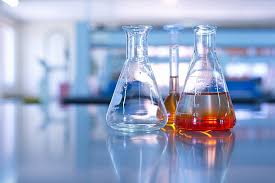Why laboratory glassware is playing an important role?
Why laboratory glassware is playing an important role?
Laboratory glassware may not always be the most glamorous aspect of scientific research, but it plays an undeniably crucial role in laboratories around the world. From beakers and flasks to pipettes and burettes, these seemingly simple tools are the unsung heroes of scientific experimentation. In this article, we will explore the vital role laboratory glassware plays in scientific research and why it is indispensable to the pursuit of knowledge.
Precision and Accuracy
One of the primary reasons laboratory glassware is indispensable in scientific research is its ability to provide precision and accuracy. In many experiments, even the tiniest variation in measurement can lead to significant differences in results. Laboratory glassware is designed to offer consistent and reliable measurements, ensuring that scientists can trust their data.
the office mug https://www.trendglas-jena.com/en/spd/210304/Mug-OFFICE
ibrik https://www.trendglas-jena.com/en/spd/220037/Coffeepot-IBRIK
pour over coffee kettle https://www.trendglas-jena.com/en/spd/127305/POUR-OVER-kettle
glass tea cup https://www.trendglas-jena.com/en/spl/212677/Tea-cup
tea jug https://www.trendglas-jena.com/en/spd/320102/Tea-jug-1-8-blue-4-pcs
3 cups coffee https://www.trendglas-jena.com/en/spd/118006/Coffe-maker-3-cups
tables to teapots https://www.trendglas-jena.com/en/spd/103507/Teapot-MIKO-2-0-G-SAFETY
cheese dome https://www.trendglas-jena.com/en/spd/315207/Cheese-dome-G
For example, volumetric flasks are used to prepare solutions with precise concentrations. These flasks are calibrated to hold an exact volume of liquid, which is critical in analytical chemistry and other fields where accuracy is paramount. Similarly, graduated cylinders and pipettes allow for precise volume measurements, helping scientists achieve reproducible results.
Chemical Resistance
Laboratory glassware is typically made of high-quality borosilicate glass, which is known for its exceptional chemical resistance. This resistance to corrosion by acids, bases, and other chemicals is crucial in experiments where reactions take place.
Researchers can confidently use glassware to handle and store a wide range of chemicals without fear of contamination or damage to the equipment. This chemical stability makes glassware a preferred choice for many experiments involving corrosive substances.
Transparency
Transparency is another critical characteristic of laboratory glassware. Being able to see the contents of a vessel is essential for observations, measurements, and visual inspections during experiments. Glass allows scientists to monitor reactions, changes in color, precipitation, and other vital indicators.
This transparency is particularly important in fields like biology and microbiology, where scientists need to observe cell cultures, microbial growth, and chemical reactions in real-time. It enables researchers to make timely adjustments and gather valuable data about the progress of their experiments.
Heat Resistance
Laboratory glassware is designed to withstand a wide range of temperatures, making it suitable for experiments that involve heating or cooling. Bunsen burners, hot plates, and water baths are commonly used in laboratories to apply heat, and glassware can withstand these temperature changes without cracking or shattering.
This heat resistance is crucial in various applications, such as distillation, refluxing, and melting point determinations. Researchers rely on glassware's ability to endure extreme temperatures to carry out experiments safely and accurately.
schott duran germany https://csonkagroup.com/wp-content/uploads/2021/04/schott-duran-uvegcso-es-uvegbot-katalogus.pdf
trendglas jena https://csonkagroup.com/wp-content/uploads/2021/04/trendglas-jena-2012.pdf
schott glassware catalogue https://csonkagroup.com/en/download/schott-conturax-and-conturax-pro-catalogue/
class a volumetric flask uncertainty https://csonkagroup.com/wp-content/uploads/2021/04/duran%C2%AE-volumetric-instruments.pdf
schott duran https://csonkagroup.com/wp-content/uploads/2021/04/schott-duran-uvegcso-es-uvegbot-katalogus.pdf
volumetric pipette uncertainty https://csonkagroup.com/wp-content/uploads/2021/04/duran%C2%AE-volumetric-instruments.pdf
Versatility
The versatility of laboratory glassware cannot be overstated. There is a vast array of glassware available, each designed for specific tasks and experiments. From Erlenmeyer flasks for mixing solutions to test tubes for small-scale reactions, researchers can choose the right tools for their needs.
Additionally, laboratory glassware can often be easily adapted for different purposes. With the right attachments and accessories, a single piece of glassware can serve multiple functions, increasing its utility and cost-effectiveness.
Sterilization
In many scientific fields, maintaining a sterile environment is essential to prevent contamination and ensure the validity of experimental results. Laboratory glassware can be autoclaved or subjected to other sterilization methods, allowing researchers to work with confidence in a controlled and contamination-free environment.
This is particularly critical in microbiology, where even a single microorganism introduced from outside can compromise the integrity of an experiment. The ability to sterilize glassware ensures that experiments involving microbial cultures or sensitive biological materials are conducted under strict aseptic conditions.
Environmental Friendliness
Compared to single-use plastic alternatives, laboratory glassware is more environmentally friendly. Glassware can be cleaned, sterilized, and reused many times, reducing the generation of plastic waste associated with disposable lab supplies.
As sustainability becomes an increasingly important concern, many laboratories are making efforts to reduce their environmental impact by choosing reusable glassware whenever possible. This not only saves resources but also helps minimize the disposal of plastics into landfills and oceans.
Tradition and Tradition and Aesthetics
Laboratory glassware carries a sense of tradition and aesthetics that adds to its allure. The iconic shape of a conical Erlenmeyer flask or the elegance of a burette reflects the historical legacy of scientific discovery. Many scientists take pride in using glassware that has been a part of scientific laboratories for centuries.
Moreover, the transparency and clarity of glassware make it visually appealing. The sight of colorful solutions, swirling reactions, and clear liquids in glass vessels can be both scientifically inspiring and aesthetically pleasing.
In conclusion, laboratory glassware is an unsung hero of scientific research, playing an essential role in precision, accuracy, chemical resistance, transparency, heat resistance, versatility, sterilization, environmental sustainability, and even tradition. While it may not always receive the spotlight, it is the backbone of countless experiments and discoveries across various scientific disciplines. As technology advances, laboratory glassware continues to evolve, ensuring that it remains an indispensable tool for scientists worldwide, helping them push the boundaries of knowledge and innovation.
© Copyright Online Marketing

